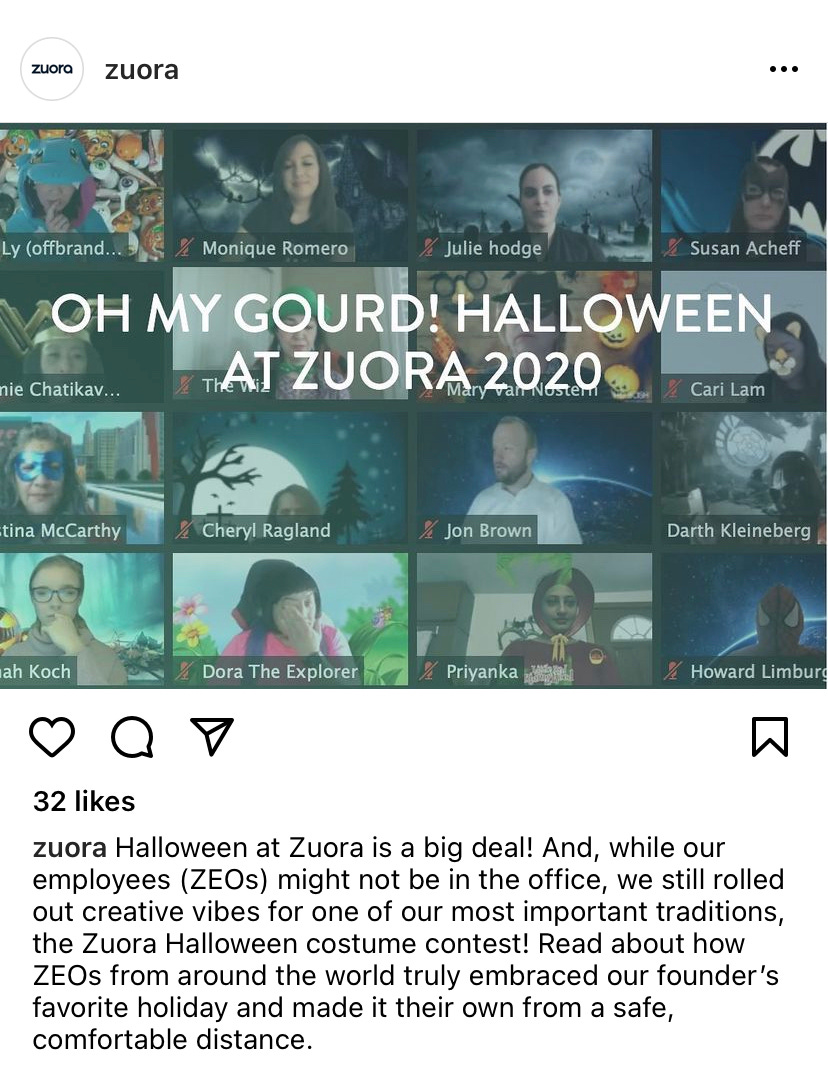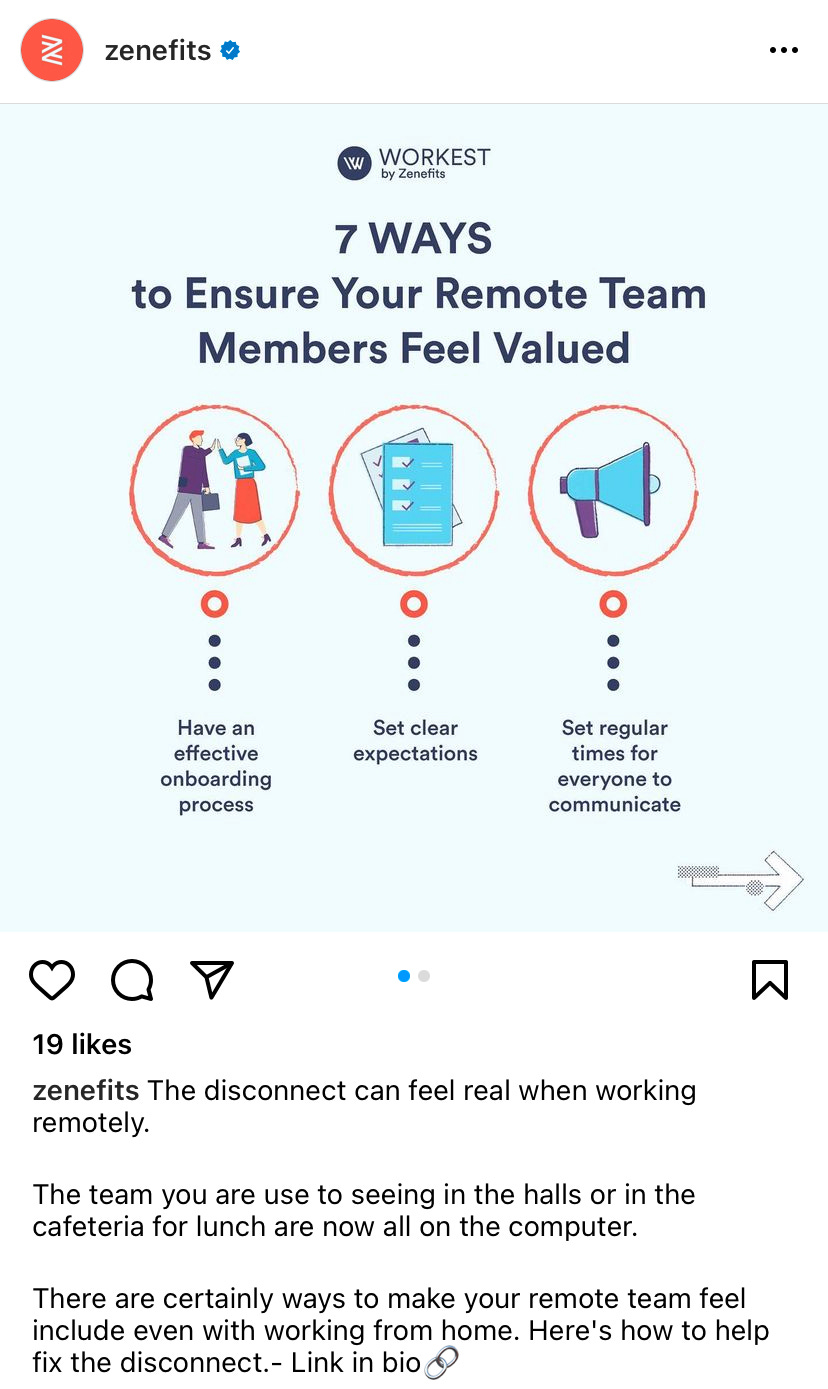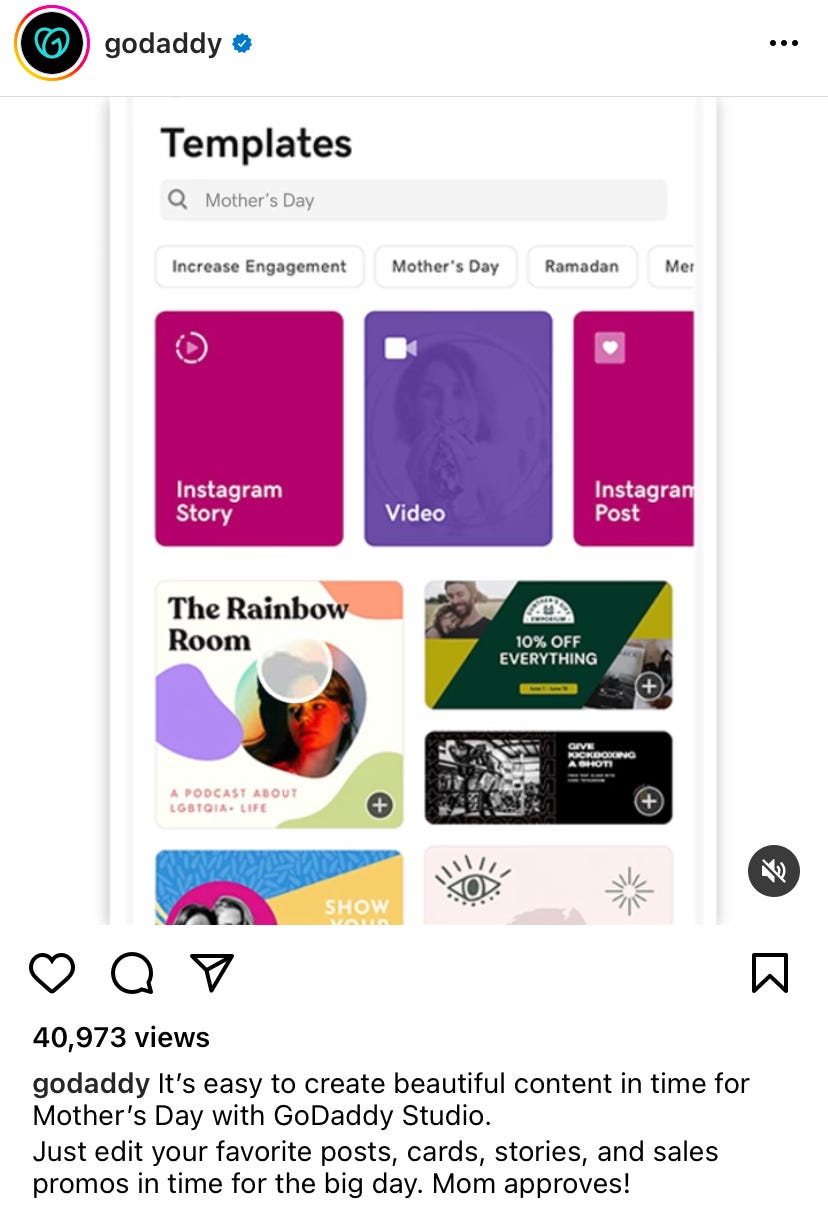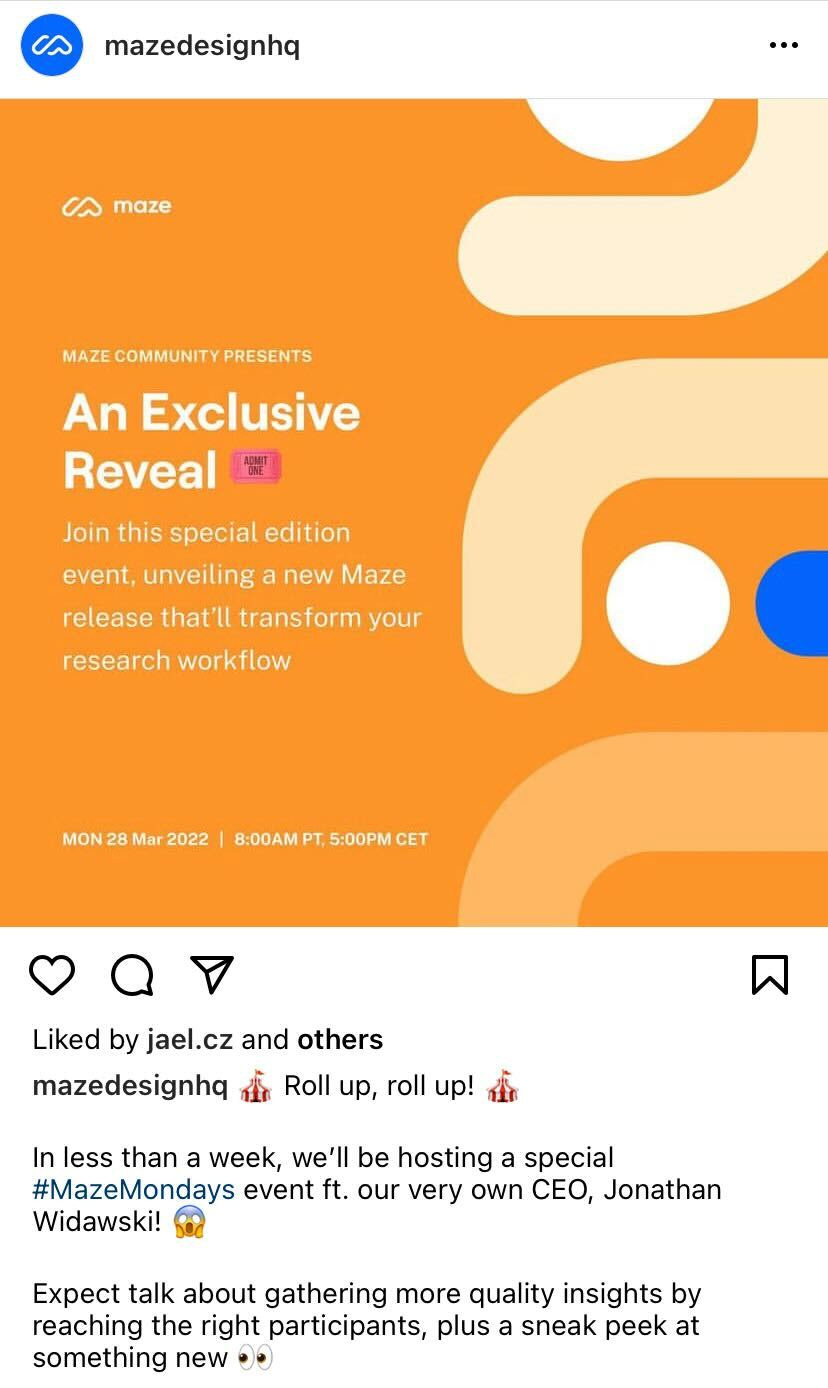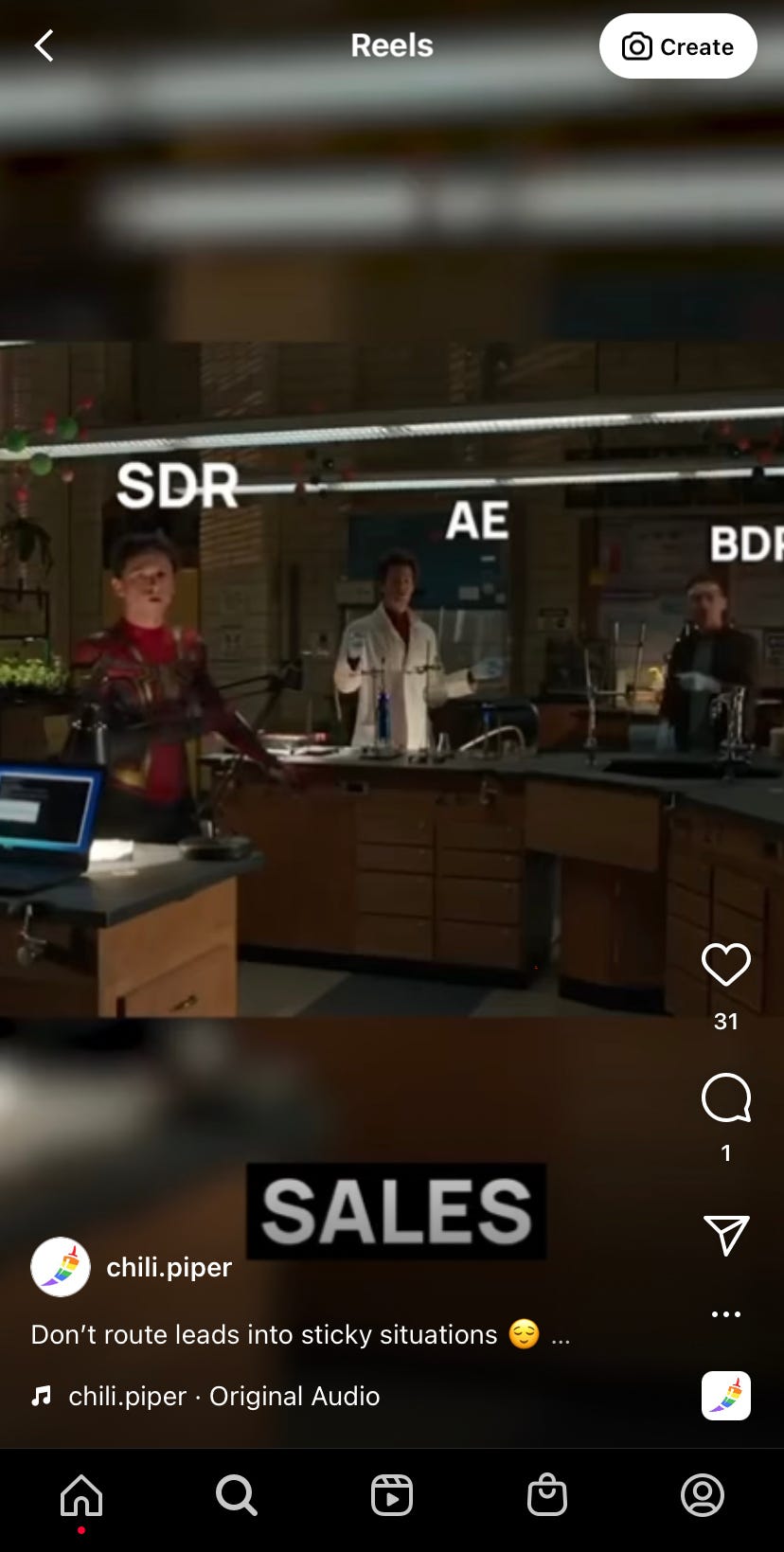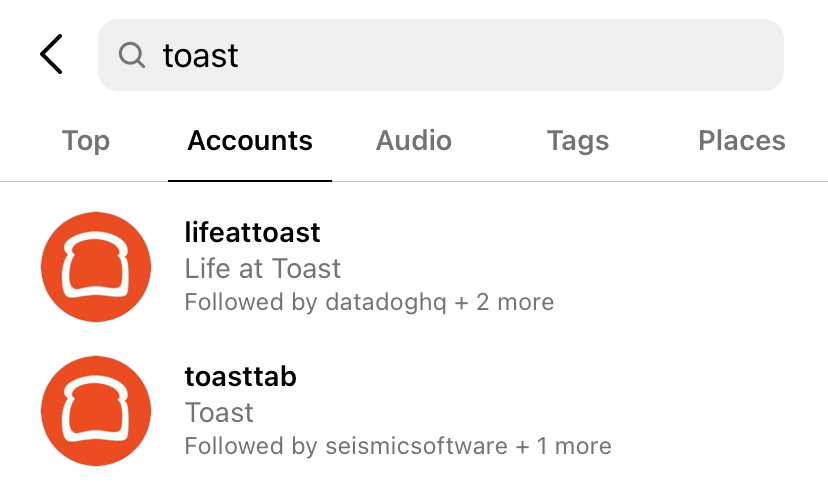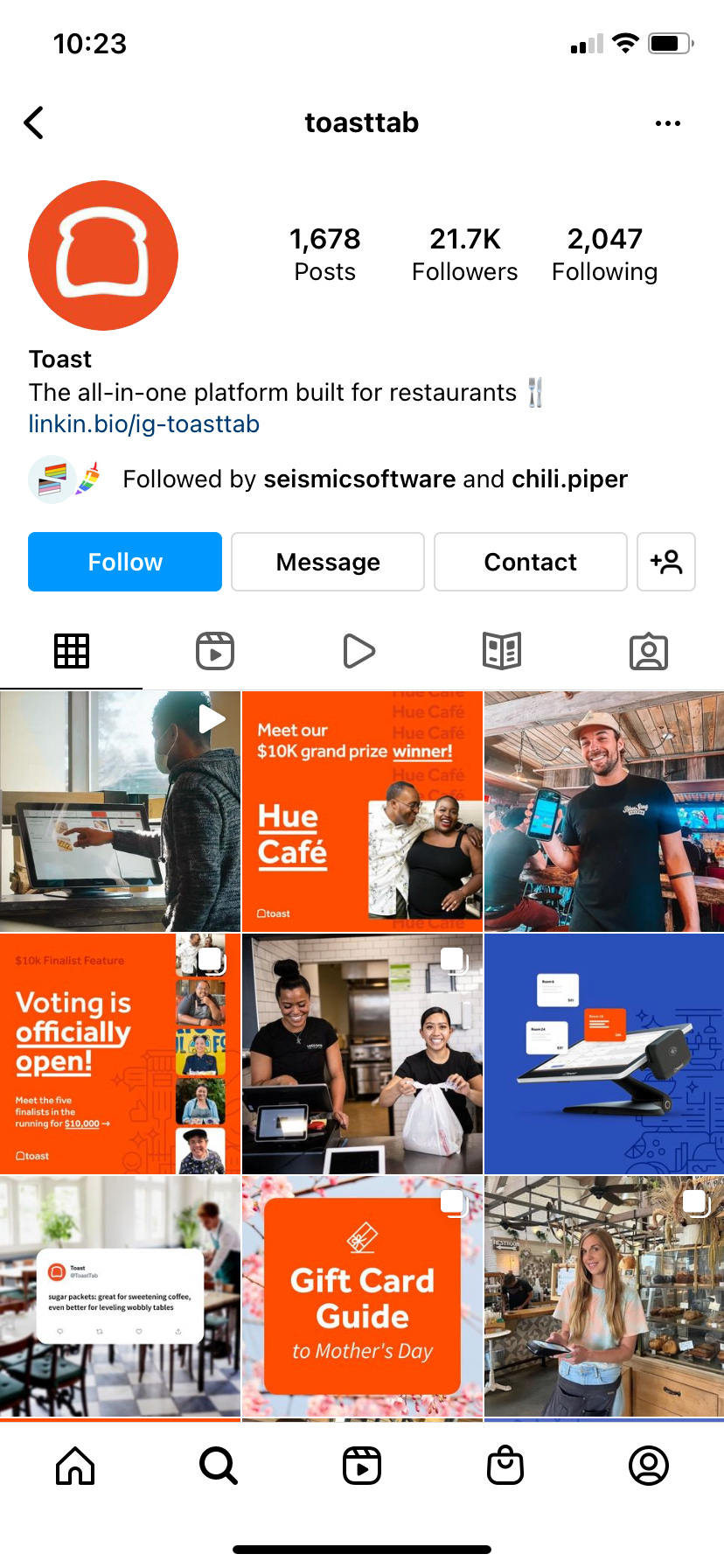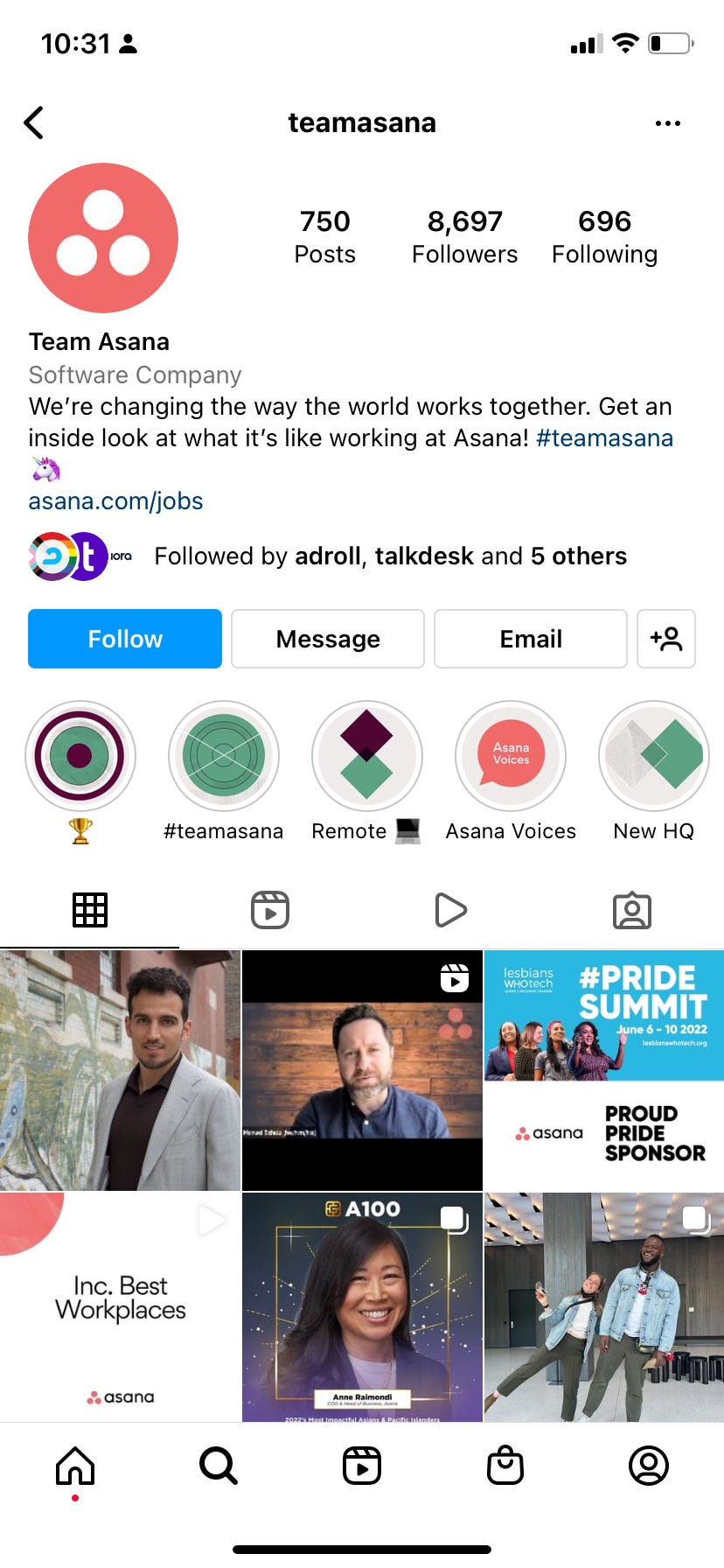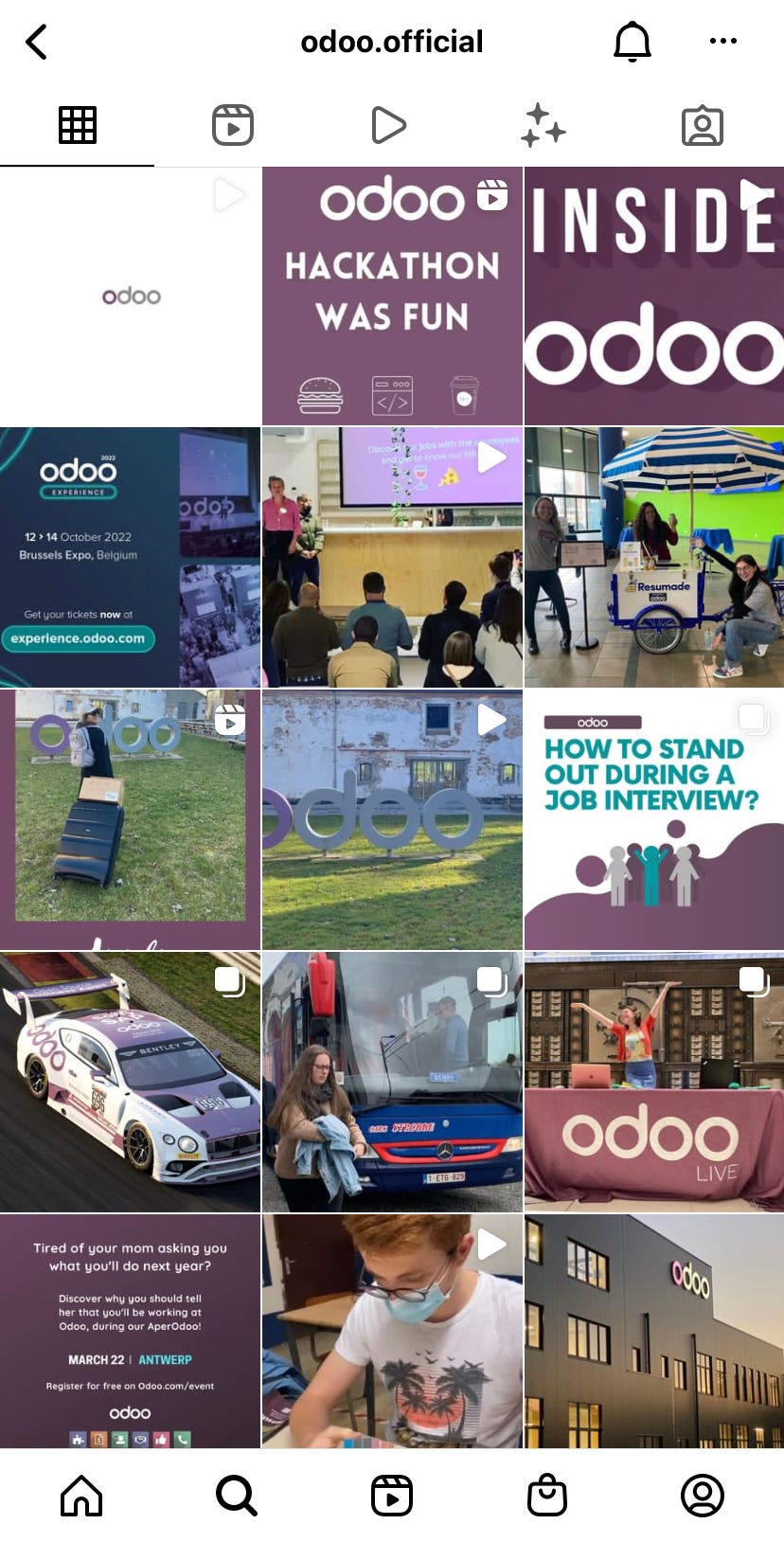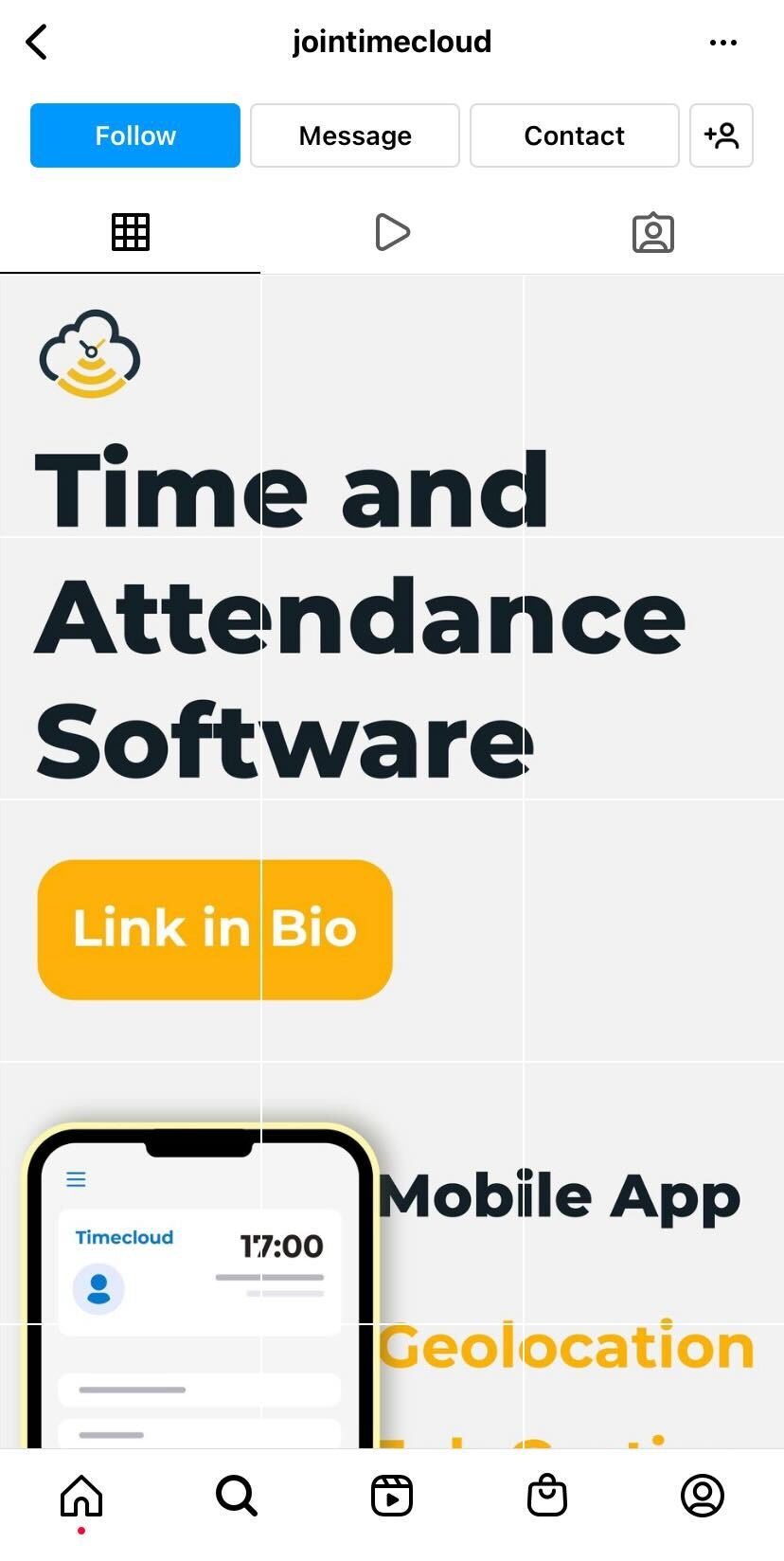The 6 ways B2B companies use Instagram
Examples from Asana, GoDaddy, Odoo, Toast, Zapier, and more
Instagram still feels awkward for B2B marketing.
How can this be, given that the social network has been around for 12 years and has 2 Billion+ monthly active users?
Should your favorite team collaboration app, for example, post a video of a gushing 20-something employee enjoying free sushi at the office, screenshots from a new product update, post their take on the latest meme, all of the above?
To be fair, there are plenty of companies that do a decent job of it, and I highlight 12 examples of them below.
But it generally feels like B2B companies haven’t figured out why or how to use Instagram – that to be on the platform at all is enough.
After searching for and following hundreds of B2B companies, I not-so-scientifically concluded that:
There are generally six different ways that companies use the platform
A majority of them make you want to ask “what are you trying to do here?”
10 - 20% of companies don’t have a profile at all – including companies that actually advertise on Instagram, and those that you might expect to based on size or other factors
The 6 most common B2B marketing strategies on Instagram:
Culture and hiring: engage employees and look appealing to potential candidates
General marketing: as another channel in their marketing mix used to share blog posts, product updates, customer stories, events, etc.
Fun / entertainment: engage prospects, customers, employees in a casual way e.g. lots of memes
Multiple accounts for different purposes: e.g. two official accounts, one for customers/prospects and one for employees/candidates
All of the above: i.e. no apparent strategy. This seems to be the most common
Set it and forget it: create a few posts then forget about the account altogether
Which strategy would I recommend?
For startups I would use Instagram primarily for general marketing (#2), and for medium to large-sized companies the use of multiple profiles for different purposes (#4) seems optimal, as a consumer and as a marketer.
A candidate for a job at Asana for example, could search for “Asana” and see the Life at Asana profile, and easily learn more about what it’s like to work at the company. This would be an ideal outcome for Asana as the employer and the job candidate. But the person (or prospects, customers, etc.) could also view the main Asana profile to learn more about their products, what makes the company different, etc.
My intention is that this analysis might help evolve your own approach to using Instagram, or that you could visit a profile and think “that’s the one, I want our Instagram account to be like <company>.”
The companies and images listed below are what I consider well-executed examples of the six Instagram strategies.
12 inspirational examples of B2B companies on Instagram
1. Cognizant
Strategy: culture and hiring
Posts about family leave benefits, black history month, leadership development programs, cool videos of their Formula 1 car…and nearly none about their products or services. Cognizant is a great example of optimizing an Instagram profile for employee engagement and talent brand purposes.
2. Zuora
Strategy: culture and hiring
3. Zenefits
Strategy: general marketing and thought leadership content
If you like the idea of using Instagram for more traditional marketing purposes, Zenefits offers great inspiration with nicely designed posts with helpful tips, useful content – the usual stuff.
4. GoDaddy
Strategy: general marketing*
GoDaddy actually has a ton of profiles including GoDaddyLife, but their main Instagram profile is a great example of how to use your profile for general marketing with product info, helpful content, case studies, etc.
They share a ton of video content. Very professionally-done videos that show new features. Lots of posts about their customers – small businesses and their stories, and of course, how they use GoDaddy.
5. Maze
Strategy: general marketing and helpful content
Including a third example of the “general marketing” category because Maze is a startup (100-200 employees), whereas GoDaddy and Zenefits are much larger (i.e. more resources)
6. Zapier
Strategy: memes and entertainment
Zapier posts a lot of memes. The thinking behind this strategy is likely something along the lines of: “People use Instagram mostly for non-work entertainment, so we’ll try to keep it light-hearted.” There’s merit to this.
7. Chili Piper
Strategy: memes / entertainment
8. Toast
Strategy: multiple accounts for different purposes
Instagram profiles (2): general marketing; culture/hiring
9. Asana
Strategy: multiple accounts for different purposes
Instagram profiles (3): General marketing; Team (culture/hiring), Design team (culture/hiring)
Asana goes with quality over quantity, and the quality is pretty good. Lots of nicely-produced videos about product updates, random IG live events, etc. Generally pretty buttoned-up but also some more casual posts mixed in.
10. Monday.com
Strategy: use it for everything: a mix of culture, events, product updates
Contrasted with Asana, Monday.com (a direct competitor) looks very casual and Gen Z in their approach to Instagram.
Like this post, which has an employee (probably?) giving some casual tips about how to use the platform, but with some high-fidelity screen recordings overlayed.
11. Odoo
Strategy: use it for everything: a mix of culture, events, product updates
12. Time Cloud
Strategy: set it and forget it
It’s hard to condone Time Cloud’s strategy here, but points for creativity by using the grid to create a mural of sorts, and it’s better than not having any Instagram presence at all. If someone searches for you at least they’ll find that you do exist, and you can direct people to your website.
Final thoughts
On a platform where users share personal updates, travel stories, food photos, group pics, how do B2B companies fit in?
The context is just kind of awkward. And the truth is that it’s not just Instagram – all social media still feel a bit awkward in B2B marketing (even, or especially, LinkedIn).
There’s no perfect way for B2B companies to use Instagram. If you provide interesting content and make it look good you’re 90 percent of the way there.
But, as with any other new marketing channel you might consider, you need good answers to questions like: is your audience there? What are your goals? What does my audience care about?
The answers to these and other questions will inform which strategy you choose.




